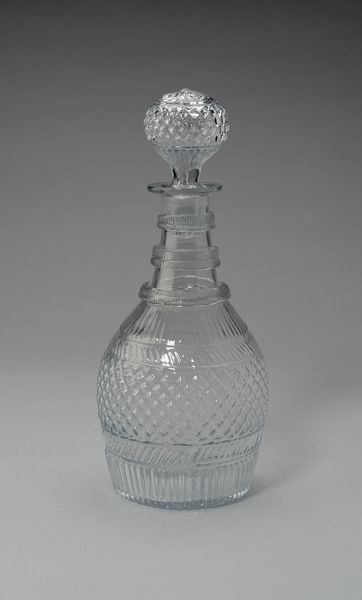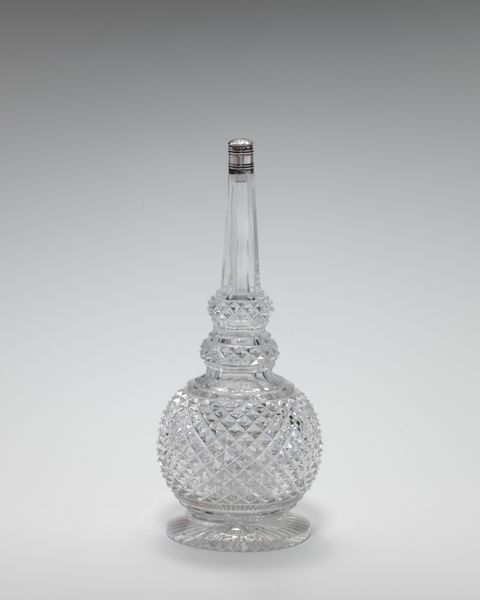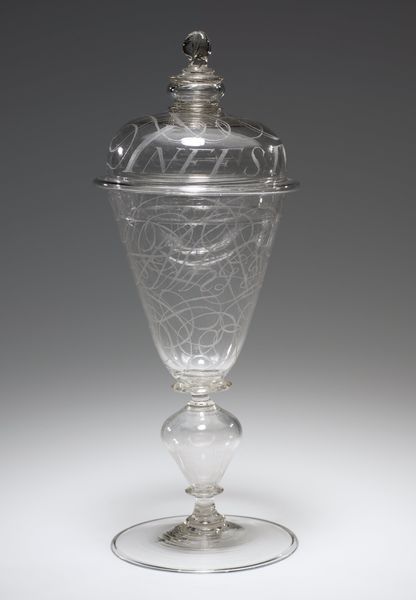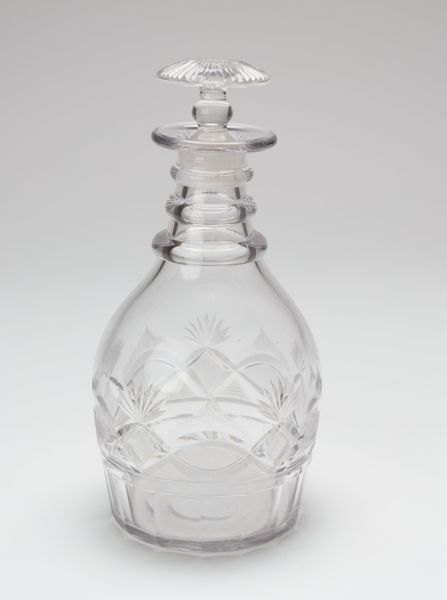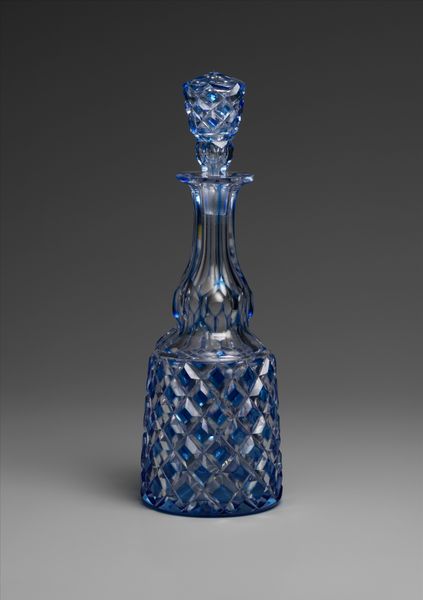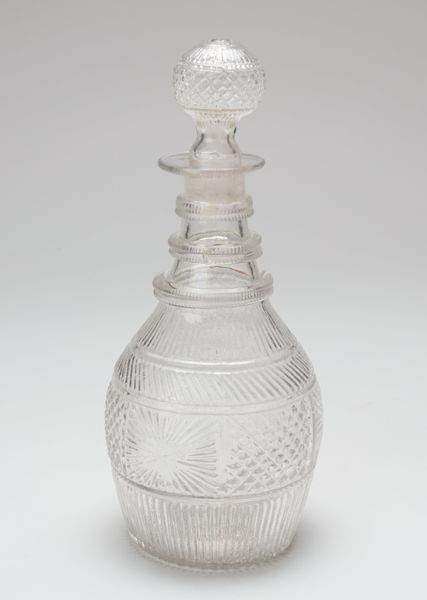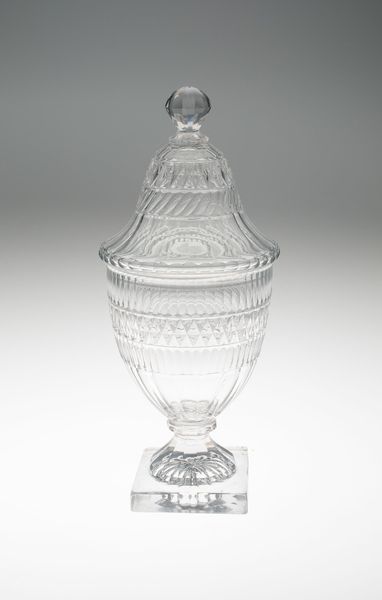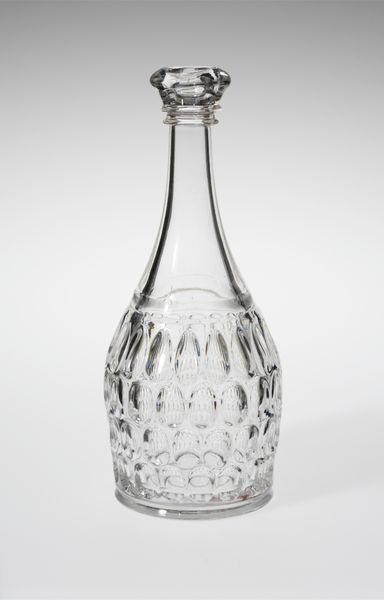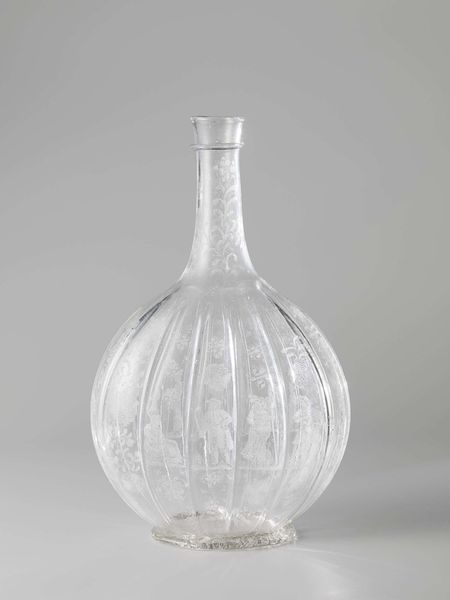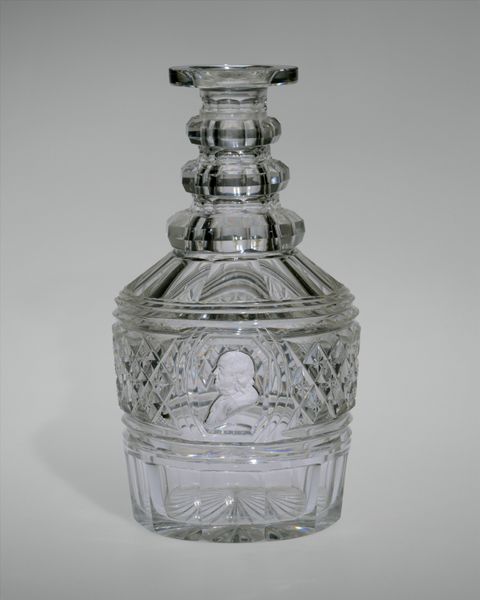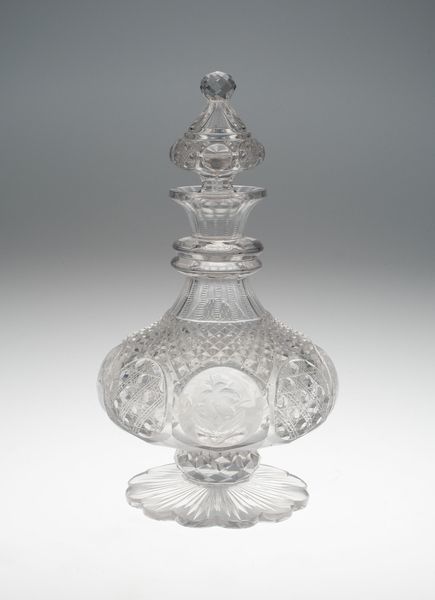
glass
#
glass
#
united-states
#
decorative-art
Dimensions: H with stopper: 12 1/4 in. (31.1 cm), without stopper: 9 1/4 in. (23.5 cm)
Copyright: Public Domain
Editor: Here we have a glass decanter, likely created between 1850 and 1860 by the Brooklyn Flint Glass Company. It’s such an intricate piece! All those cuts must have taken incredible skill. What strikes you about this object? Curator: It speaks to the democratisation of luxury during the mid-19th century. The rise of industrial glass production, particularly "flint glass" which, despite its name, included lead for brilliance, allowed for more widespread access to elaborate, decorative items. Look closely; does the pattern seem particularly aligned with function, or with display? Editor: I'd say display – it's all about how light refracts. Was this type of glassmaking labor intensive? Curator: Mass production, even then, involved distinct divisions of labour. One group might create the basic form, another the intricate cut designs. Understanding this specialized labor, alongside the source of materials, illuminates the larger economic system it was part of. And think about who could afford it – did it symbolize wealth? Editor: That's fascinating! It is clearly for a wealthy family to present and serve liquor. Considering the historical context really enriches the experience. Thanks for shining a new light on it! Curator: My pleasure. Thinking about materiality and the process can reveal a great deal about social and economic history!
Comments
No comments
Be the first to comment and join the conversation on the ultimate creative platform.
